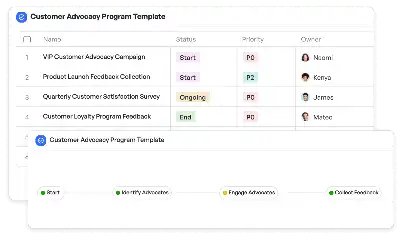AI Project Technical Debt Reduction Plan
Achieve project success with the AI Project Technical Debt Reduction Plan today!

What is AI Project Technical Debt Reduction Plan?
The AI Project Technical Debt Reduction Plan is a structured approach to identifying, prioritizing, and resolving technical debt within AI projects. Technical debt refers to the implied cost of additional rework caused by choosing an easy solution now instead of a better approach that would take longer. In the context of AI, this could mean outdated algorithms, inefficient data pipelines, or legacy code that hinders scalability and performance. This plan is crucial for maintaining the long-term health of AI systems, ensuring they remain adaptable to new challenges and technologies. For instance, an AI-driven recommendation engine might accumulate technical debt through quick fixes that compromise its ability to handle increasing data loads. By systematically addressing these issues, the AI Project Technical Debt Reduction Plan ensures the system's robustness and efficiency.
Try this template now
Who is this AI Project Technical Debt Reduction Plan Template for?
This template is designed for AI project managers, data scientists, software engineers, and DevOps teams who are responsible for maintaining and improving AI systems. Typical roles include AI architects who need to ensure the scalability of their models, data engineers tasked with optimizing data pipelines, and product managers aiming to deliver reliable AI-driven features. For example, a data scientist working on a predictive analytics model might use this plan to address inefficiencies in feature engineering processes. Similarly, a DevOps engineer could leverage the template to streamline the deployment of AI models, reducing downtime and improving system reliability.

Try this template now
Why use this AI Project Technical Debt Reduction Plan?
AI projects often face unique challenges, such as rapidly evolving technologies, complex dependencies, and the need for high computational efficiency. These factors can lead to technical debt that, if left unaddressed, can cripple project progress. The AI Project Technical Debt Reduction Plan provides a clear roadmap to tackle these issues. For instance, it helps prioritize debt items based on their impact on system performance, ensuring that critical bottlenecks are addressed first. It also facilitates collaboration among team members by providing a shared framework for identifying and resolving technical debt. By using this template, teams can avoid the pitfalls of ad-hoc fixes, ensuring their AI systems remain robust, scalable, and efficient.

Try this template now
Get Started with the AI Project Technical Debt Reduction Plan
Follow these simple steps to get started with Meegle templates:
1. Click 'Get this Free Template Now' to sign up for Meegle.
2. After signing up, you will be redirected to the AI Project Technical Debt Reduction Plan. Click 'Use this Template' to create a version of this template in your workspace.
3. Customize the workflow and fields of the template to suit your specific needs.
4. Start using the template and experience the full potential of Meegle!
Try this template now
Free forever for teams up to 20!
The world’s #1 visualized project management tool
Powered by the next gen visual workflow engine




